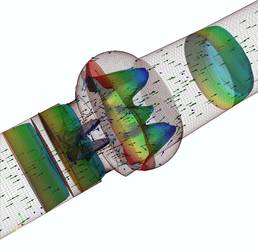VMTK – Fluent – Paraview:
Computational Tools For Hemodynamics Applications
Engineering applications involving biological fluids have highly transversal requirements in terms of domain definition, flow conditions, fluid rheological properties, structure motion, visualization and post-processing of the results.
For these reasons, and thanks to the enormous developments of computational sciences, a computer-aided–engineering workflow seems to be a possible elective environment where to perform hemodynamics studies and medical device design.
Today a large part of the technological requirements needed to tackle these problems in a computational environment are already available in open source and/or commercial software.
Nevertheless, success still strongly depends on technical knowledge and practice.
This four days course, focused on the technical aspects of this field of application and structured as an extended hands-on tutorial, is intended to walk the attendants through a complete analysis of a sample hemodynamic application, providing technical insights on each phase of the workflow.
The main expected benefits for the course attendant are:
- enlarge their knowledge on state of art methods and algorithms;
- apply best practices on state-of-the-art software deployment;
- experience technical tips-and-tricks throughout the different phases of the tutorial;
- learn from case history and practical applications told by ANSYS experts.
The course will therefore facilitate and speed-up in silico healthcare research and Computational Fluid Dynamics driven medical device design.




